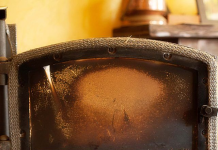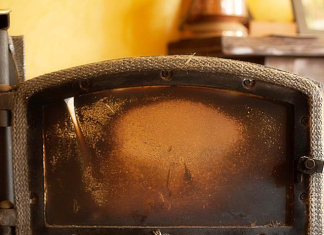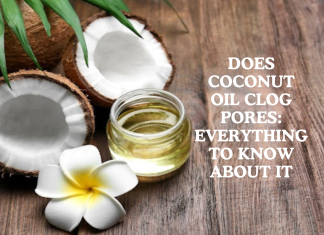There’s not a thing in the world that can replace the feeling of getting a good night’s sleep. If you’re not content with the bed you have now, then it may be time to go to a store and get a new one. A bed has a significant impact on one’s quality of sleep. As such, it’s essential that any mattress shopper conduct in-depth research on types of mattresses, the tips, what to avoid, and many more.
The mattresses mentioned below have their benefits, advantages, and disadvantages.
While reading the information below, determine your favored sleeping position, body type, and what kind of mattress would best suit you. Without further ado, read on below to start your different types of mattress shopping journey the right way!
Content Summary
Memory Foam
Memory foam is known for its incredible softness. Memory foam may be the best mattress for you if you are a side sleeper as it provides support and comfort at the same time. There’s a good reason why memory foam can be seen almost everywhere: it molds to the body when you apply pressure and heat while distributing the weight evenly.
It was invented back in the 1960s for cushioning in NASA’s airplane seats. Today, it’s in helmets, shoes, pillows, sofas, and of course, mattresses. After laying down on the bed, the mattress will soon return to its original shape since there’s no more pressure and heat. Granted, it’s unlikely that it will lose its effectiveness over time.
Pros
- It contours to the body, offering support for most sleeping positions, especially a side sleeper.
- It’s so soft you might think you’re laying down in a fluff of clouds.
- Extremely resistant to allergens and dust mites.
- It can work well with adjustable mattresses.
- There is little to no motion transfer.
- It offers incredible pressure point relief.
Cons
- Some memory products may retain heat from one’s body, making it uncomfortable during warmer temperatures.
- When delivered to your home, it may have an odd chemical smell which can be annoying for those sensitive to smell.
Innerspring
These beds utilize metal coils for their support. It has layers of memory foam and latex for increased durability and comfort. Innerspring mattresses were invented during the 1880s, and today, it’s still one of the most popular mattresses on the market.
Indeed, even though it was designed before we were born, that does not mean that innerspring beds didn’t improve. The mattresses sold today utilize high-quality manufacturing methods, better designs, and quality materials. It is to ensure that they provide a mattress to customers with fewer squeakiness sounds and motion transfer.
Pros
- It is known for its affordability.
- It offers homeowners several options of firmness levels.
- It’s available in almost every store.
- It has that iconic bounce you remember from childhood.
Cons
- You cannot flip most beds due to these being one-sided only.
- It tends to wear out faster, sag in the middle, which is terrible for one’s spinal health and can lead to a poor night’s sleep.
- You may hear squeakiness in some beds, disturbing those sensitive to sound when sleeping.
Hybrid
Hybrid mattresses combine an innerspring’s metal springs with layers of the softness of either memory or latex foam for an experience of luxury and incredible throughout one’s sleep. This type of bed is one of the latest innovations in the mattress industry. You can experience both the bouncy effect while enjoying the softness that comes with a foam layer.
Pros
- It is a customized option.
- It’s incredibly soft, which makes the experience comfortable.
- It combines the best of both worlds in one mattress.
- It offers pressure relief.
- It can support one’s joints, spine, and back.
Cons
- It can be expensive.
- It may trap heat which can result in discomfort.
Airbeds
You might think of airbeds as those air mattresses that you usually see in college dormitories. Still, air beds are different from air mattresses. These beds look like any other type of bed, but they can be adjusted with a push of a button. Additionally, it has layers that consist of foam to prevent it from sagging over time!
Pros
- It is highly customizable.
- It’s the perfect solution for a couple with different mattress preferences.
Cons
- The air pump can be pretty noisy.
- The warranty may be shorter than most.
Natural Latex Foam
These mattresses are harvested from a rubber tree like a milk-like sap – this tree is called Hevea Brasiliensis. Latex foam has the same qualities as memory foam. Still, memory foam tends to contain chemicals compared to latex, which is a much more eco-friendly option.
Pros
- It is exceptionally durable.
- It can relieve pain for individuals with joint and back pain.
- It’s eco-friendly.
- It is a much more breathable mattress type.
- It’s hypoallergenic, and little maintenance is needed.
Cons
- It can trap heat.
- It can be hard to lift due to its heaviness.
- It’s a costly option.
- These mattresses are prone to imprints and impressions after using them. If you don’t usually move in your long sleep, it’s best to avoid latex foam mattresses.
Takeaway
Doing your research, like reading articles and reviews online about mattresses, is essential to end up with a bed that makes you comfortable throughout the night. The types of beds mentioned above are some of the most standard mattresses you may encounter while you’re surfing through online and in-store companies. Thus, it’s essential to know them better to determine if they’ll agree with your preferences.









